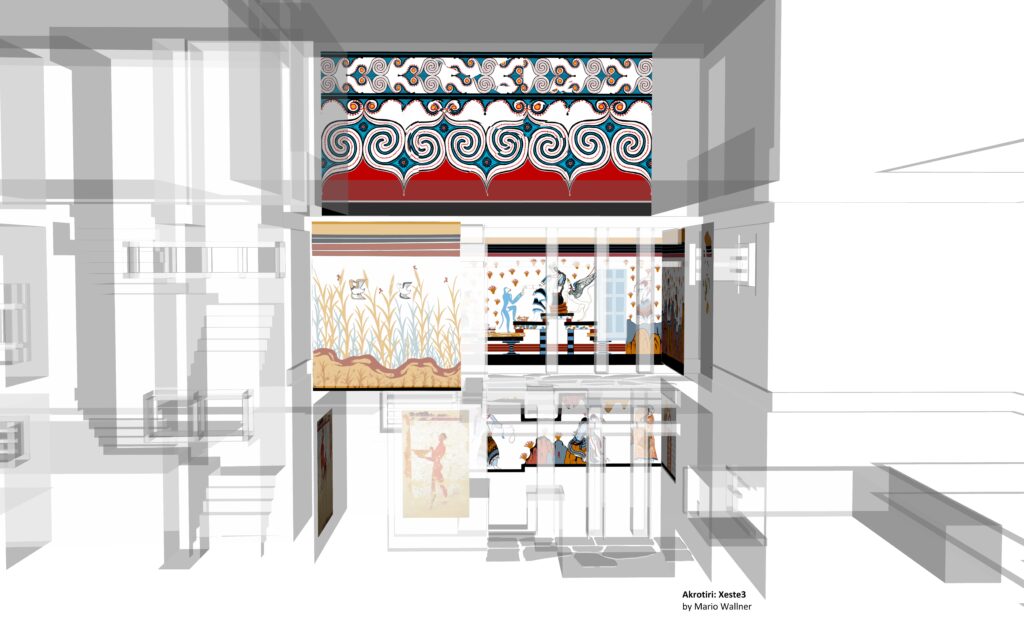The Fresco of Women from the “adyton” of Xeste 3 Building, Akrotiri, Thera

The Fresco of Women formed part of the pictorial decoration of the three-storeyed Xeste 3 Building, an emblematic edifice in the Akrotiri settlement on Thera that flourished in 1600 BC. Owing to its architectural layout and multifigure wall painting programme, it was believed that the building could be accessed only by priests during initiation rituals intended to introduce girls and boys into the world of adults.
More specifically, this section of the fresco picturing three women was part of an ensemble in which a sanctuary entrance with double blood-dripping Minoan Horns of Consecration, red lilies, altars, and a centuries-old olive tree were depicted indicating a sacrifice, whereas on the upper storey, four saffron-gatherers are shown collecting crocuses to offer them to Potnia, the goddess of nature and fertility.
The woman on the left, also known as the “Necklace Swinger” is obviously a gift-bearer. She has rich hair and full breast and, due to the elaborate jewels she wears, she most likely belonged to the upper class.
The “Wounded Woman” in the centre of the representation is portrayed sitting on a low rock, from which crocuses grow, and is injured. She has hurt her left foot that is bleeding and holds her head betraying the pain she feels. At the point where the blood drips, a crocus flower sprouts laying emphasis on the plant’s healing properties, but also on the resurgence brought about by this rite of passage, whose narrative unfolds on both storeys of the building. Foreshadowing the miracle-worker healing Saint Anastasia Pharmakolytria in later centuries, the woman is in pain, bleeding, yet at the same time experiences the miracle of the cycle of life.
To her right, a veiled girl, whose head is shaved, looks ecstatically at the shrine and the wondrous events, as she is about to welcome adulthood.


